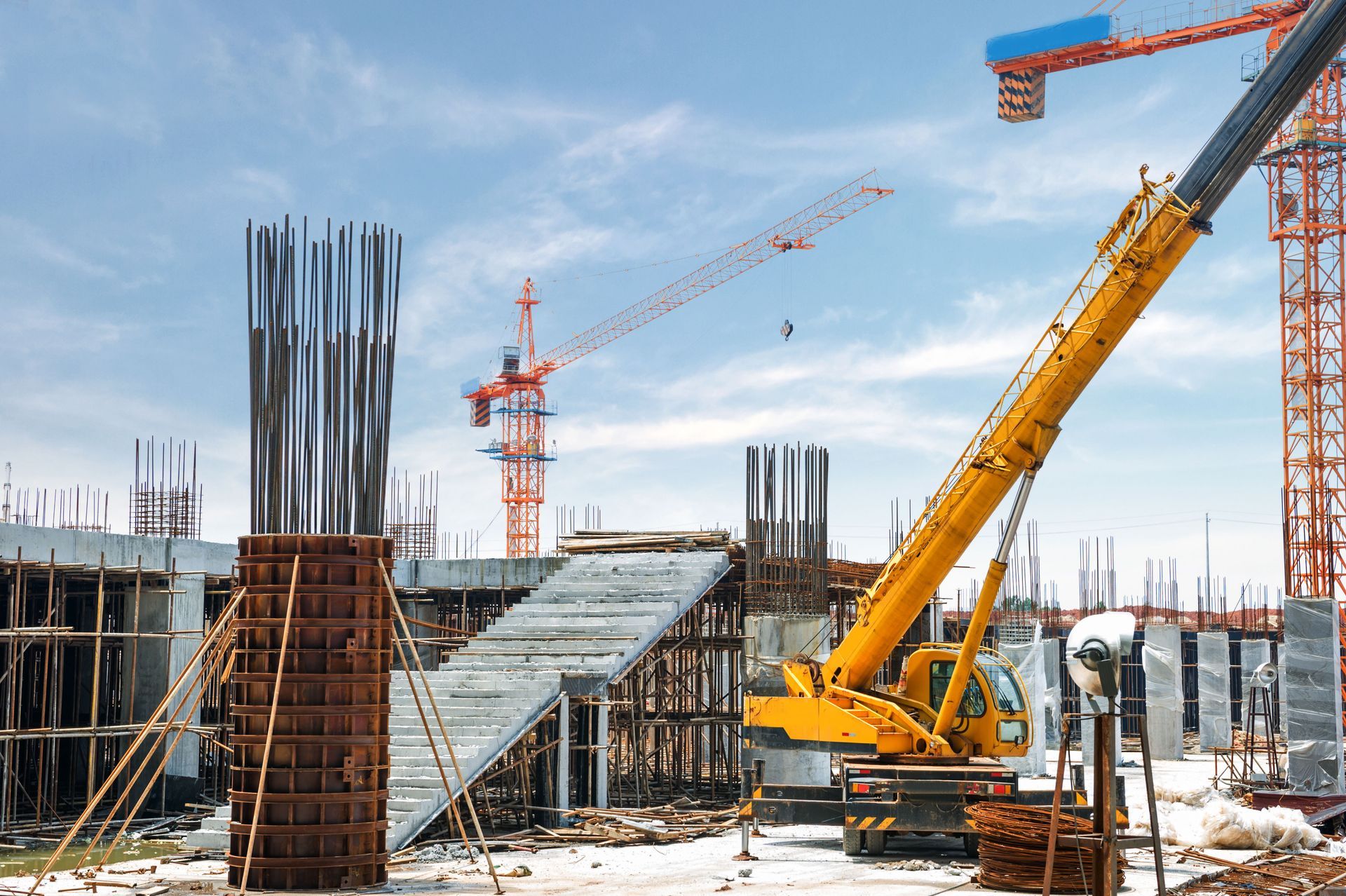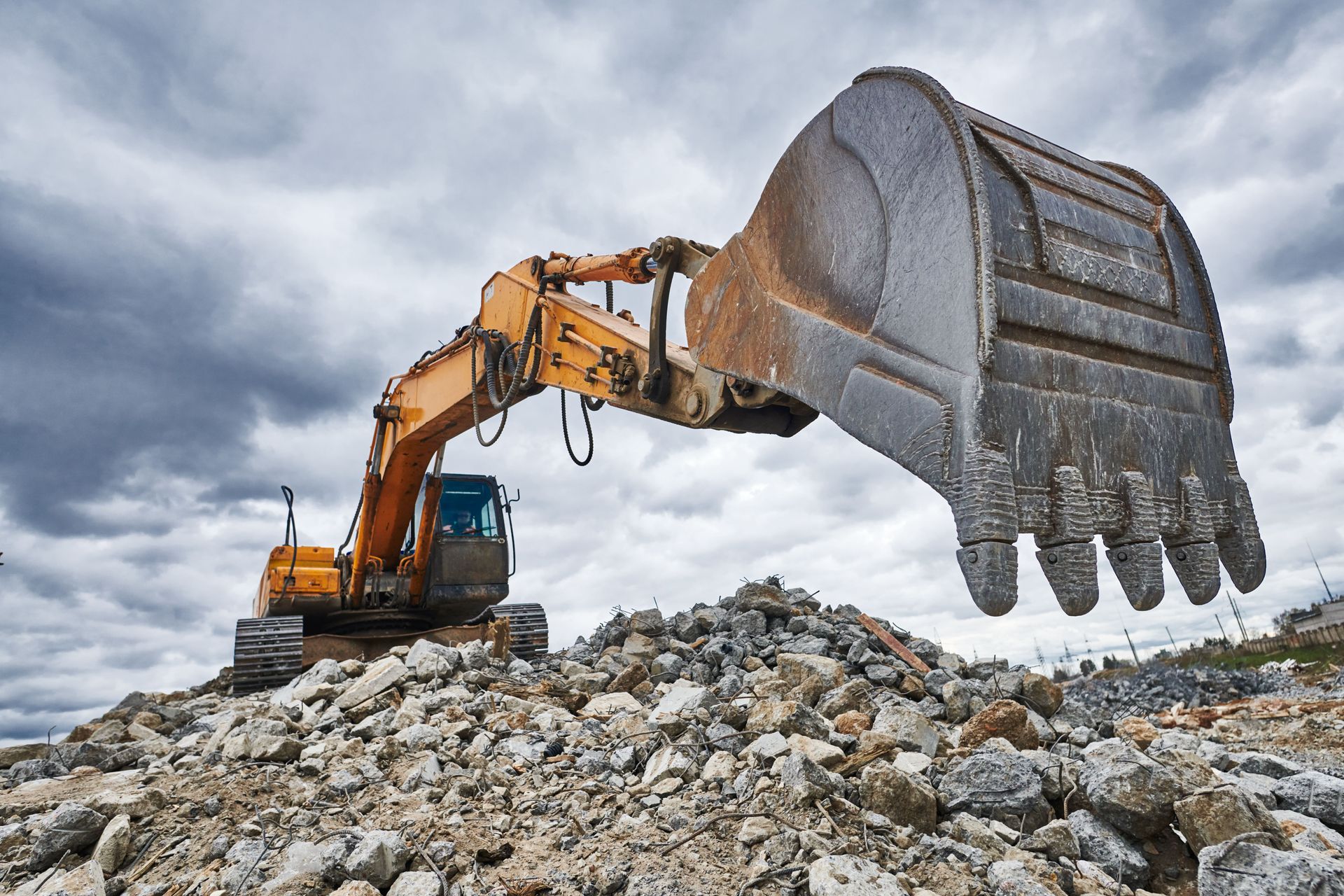November 14, 2025
The decision to demolish concrete structures is not one to be taken lightly. It is often necessitated by a range of practical reasons that can include safety, aesthetic, or functional considerations. Concrete demolition can pave the way for newer, safer, and more efficient structures. Enabling progression in urban landscapes, it ensures spaces meet contemporary needs. In this article, we'll explore different scenarios where concrete demolition stands out as the optimal solution.
1. Structural Integrity Concerns
1.1 Identifying Signs of Structural Weakness
Structural integrity concerns often begin with visible signs of wear and tear on concrete structures. Cracks, sagging, and moisture infiltration are common indicators of underlying issues. These can compromise a structure's safety and usability. Addressing these signs early is crucial, which sometimes means concrete demolition to replace the faulty sections. Proactive demolition, thus, prevents catastrophic failures, safeguarding both people and properties.
1.2 Safety Risks and Liability
Over time, weakened concrete can present significant safety hazards. As structural integrity diminishes, the risk of sudden collapse increases. Property owners and managers may face legal liabilities for accidents caused by neglect. By opting for strategic demolition, potential dangers are mitigated, and compliance with safety regulations is ensured. Thus, demolition is not just an option, but a necessary action to uphold public safety.
1.3 Engineering Assessments and Recommendations
Expert engineering assessments are critical to evaluating the necessity of demolition. Engineers provide detailed analyses and recommendations based on structural health reports. They weigh the pros and cons of demolition against repair to ensure the best outcome. In many cases, the insights lead to demolition for comprehensive reconstruction. This approach guarantees the long-term stability and durability of new constructions.
1.4 Costs versus Benefits Analysis
Deciding between repair and demolition involves a careful cost-benefit analysis. While the immediate costs of demolition can be high, the long-term savings are undeniable. Repairs may offer temporary fixes, but demolition offers a fresh start with modern materials and techniques. Evaluating both options allows stakeholders to choose the most economically viable path. In many scenarios, the benefits of improved safety and compliance outweigh demolition costs.
1.5 Case Studies of Structural Failures
Historical cases of structural failures underscore the importance of timely demolition. For instance, incidents where maintenance was ignored led to disastrous collapses. Studies of such failures highlight the need for attentive structural assessments. These analyses provide learning opportunities, emphasizing the development of stricter inspection regimes. Concrete demolition, when applied wisely, prevents history from repeating itself.
2. Urban Redevelopment Projects
2.1 The Need for Modern Infrastructure
Urban redevelopment often calls for upgrading outdated infrastructure. Concrete demolition is central to this transformation, allowing for the introduction of new, innovative designs. By replacing older structures, cities can better accommodate growing populations and evolving needs. This approach supports the development of sustainable transportation networks and community spaces. Modern infrastructure fosters a more connected and efficient urban environment.
2.2 Encouraging Economic Growth
By removing obsolete structures, redevelopment projects drive economic growth. New constructions attract businesses, investments, and residents eager for modern amenities. Fresh developments contribute to job creation, providing employment across various industries. As a result, regions benefit from a revitalized economy that caters to both local and external demands. Demolition thus facilitates progress, laying down the foundation for thriving urban communities.
2.3 Environmental and Sustainable Development Goals
Sustainable development goals often necessitate concrete demolition for environmental benefits. Removing inefficient structures reduces energy consumption and carbon footprints in the long run. Demolition paves the way for green building technologies that emphasize sustainability. Environmental considerations are imperative to decision-making, aligning redevelopment with global sustainability objectives. Therefore, demolition can be a step toward a greener, more sustainable future.
2.4 Community Impact and Public Opinion
Urban redevelopment projects directly impact local communities, making public opinion a key factor. Transparent communication about demolition plans is essential to maintain community trust. Engaging with residents can lead to inclusive developments that reflect collective needs and values. Public support enhances project acceptance and can streamline regulatory approvals. When done right, community-involved demolition strategies yield shared benefits and reduced resistance.
2.5 Successful Redevelopment Examples
Numerous cities worldwide have witnessed successful urban redevelopment through concrete demolition. Projects that transformed blighted areas into vibrant spaces stand as testaments to effective planning. Cities like Barcelona and New York exemplify how strategic demolition has revitalized districts. These successes inspire others, showcasing the potential of demolition in spurring cultural, social, and economic rejuvenation. By learning from these examples, cities can replicate effective strategies for development.
3. Renovation and Expansion Needs
3.1 Updating Outdated Facilities
Renovations often begin with the demolition of outdated concrete facilities. With time, many structures lack the necessary features to meet modern standards. Demolition allows for complete overhauls, integrating advanced technology and updated designs. This approach ensures facilities maintain relevance and efficiency. By embracing change through demolition, properties can evolve with advancements and user expectations.
3.2 Accommodating New Technologies
The rapid advancement of technology presents both challenges and opportunities for infrastructure. Facilities must adapt to incorporate cutting-edge technologies effectively. Demolition can facilitate such adaptations, removing physical barriers to modern installations. The integration of new systems is crucial for enhanced operations and service delivery. Thus, concrete removal becomes a precursor to tech-enabled environments and smart city initiatives.
3.3 Adjusting to Changing Functional Requirements
Functional requirements of buildings often change over the decades. Spaces originally designed for one use may no longer align with current needs. Demolition provides the opportunity to reconfigure spaces for emerging demands. As functional dynamics shift, especially in urban areas, adaptable environments are necessary. Thus, concrete demolition is vital in reshaping spaces that reflect contemporary lifestyle and business models.
3.4 The Role of Demolition in Expansions
Expansions often begin with concrete demolition to make way for growth. Removing existing structures provides space for additional facilities and amenities. Properly executed demolitions ensure seamless integration between the old and new elements of a project. As cities and organizations grow, expanding infrastructure is a natural step. Demolition, therefore, plays a crucial role in managing space efficiently, enhancing overall functionality.
3.5 Balancing Heritage and Modernization
While modernization demands demolition, preserving heritage can sometimes limit options. Balancing these aspects requires careful consideration and planning. In historic areas, selective demolition can achieve modernization without eroding cultural value. Blending old with new can be done through revamping interior spaces or adding extensions. Well-executed strategies respect heritage while introducing modern convenience and style.
4. Post-Disaster Restoration
4.1 Assessing Damage After Natural Disasters
Natural disasters often leave behind extensive damage, necessitating thorough assessments. Engineers and demolition experts inspect the integrity of affected structures to determine safety. When repairs prove insufficient, demolition ensures public safety and enables rebuilding. Through swift assessments, authorities mitigate risks of further catastrophes from unstable buildings. Removing dangerous structures is crucial to community recovery and resilience plans.
4.2 Insurance and Funding Considerations
Financing demolition post-disaster often involves navigating insurance claims and seeking governmental aid. Efficient documentation and damage assessments are vital for successful claims processing. Sufficient funding influences the scope and speed of recovery operations, including demolition. By securing necessary funds, stakeholders ensure timely action to restore normalcy. Thus, financial planning becomes intertwined with the demolition processes in disaster scenarios.
4.3 Safety and Rapid Response Requirements
Post-disaster situations require immediate action to ensure safety. Demolition can be a critical component of rapid response plans, preventing further harm from unstable structures. According to HomeGuide, once permits and inspections are complete, house demolition typically takes 2 to 5 days, including leveling, cleanup, and debris removal. Quick demolition followed by efficient debris removal allows for smoother recovery operations. Prioritizing safety reduces hazards and speeds up community healing and rebuilding efforts.
Concrete demolition, while sometimes daunting, is often necessary to address a variety of structural, economic, and social considerations. Recognizing the scenarios where demolition is the prudent choice allows for informed decision-making. By understanding these contexts, stakeholders can align actions with safety, development goals, and community interests. Properly managed, demolition supports growth, modernization, and sustainability. As urban landscapes continue to evolve, concrete demolition will invariably play a pivotal role in ensuring they meet future demands. Be sure to reach out to RVA Hauling & Demo today for more information on our professional concrete demolition!





